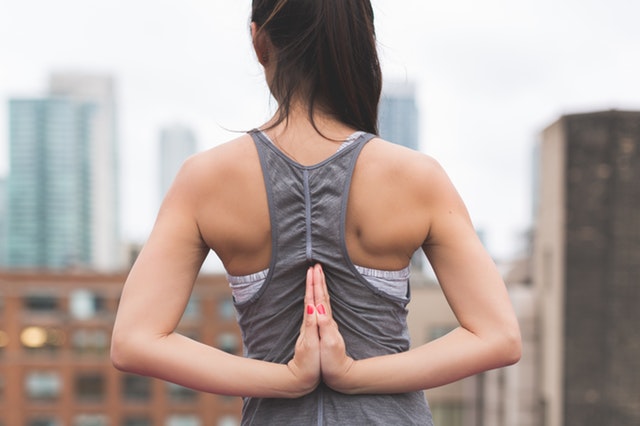Are you looking forward to a fit and healthy New Year’s resolution? In the world of health and fitness goals, the beginning of a new year is frequently an exciting moment. Motivation is normally high, and many people get off to a wonderful start with the best of intentions to become a fitter, healthier version of themselves. However, motivation can be depleted with time.
Although you may still be in a holiday mood, especially as we are now all planning for Christmas, it’s possible that you are not paying attention to your health and fitness at all. That’s perfectly OK! These ideas will assist you in getting things moving in the proper path. Furthermore, if you have already begun with a ‘hiss and a roar,’ this checklist might serve as a roadmap to help ensure that things continue in that manner going forward. No one wants to find themselves in a rut just two months into the new year! Whether you just want to get healthier, have a better routine or you’re planning to lose weight with gastric sleeve revision in the new year, having a fitness plan to support these is one of the best things you can do.
Here are some of our greatest recommendations for getting your New Year’s fitness resolution off to the best possible start.
Set Long-Term, Medium-Term, And Short-Term Objectives
First and foremost, consider your long-term health and fitness objectives. Imagine yourself in one year, and how you’d like your general health and fitness to look. What do you want to be able to do, see, or feel? What are your goals? Perhaps you want to get an attractive result, or perhaps you want to improve your performance. It’s fine to have more than one goal; just make sure everything is as succinct as possible. Concentrate on what you want and develop goals based on SMART principles to achieve it (specific, measurable, achievable, relevant and time-bound).
After that, split down your goal(s) into medium-term goals (3-6 months) and then short-term goals (less than a year) (1 month from now). A relationship should be established between your medium and short-term objectives and your long-term objective. They serve as a road map to where you want to go in a year.
Then, for the upcoming month, select some weekly goals for yourself and break them down into small daily habits that are simple to maintain and attain.
Make A Strategy
A critical piece of the ‘target attainment’ puzzle is the process of planning. Plan one month at a time in advance. As a result, you may analyse how things have gone at the end of each month and make adjustments as needed for the following month’s activities.
Make a plan and write it down on a calendar or in a diary. Here are a few items to include in your strategy:
- What type of fitness sessions you will participate in and when you will undertake them
- Your monthly goal, as well as weekly objectives and any daily routines, should be written down.
- If unanticipated obstacles arise, you will have the flexibility to adjust your plan (e.g. illness, or unexpected work or family commitments)
- You should write it down to remind yourself of your overarching long-term goal and why it is important to you in the first place.
Make Sure You’re Prepared For Success
What steps do you need to take to ensure that your plan is successfully implemented? This is referred to as the preparatory phase. When you are preparing to put your strategy into action, there are several factors to consider:
Do you have everything you need to get started on your plan right away? If not, what are you waiting for? You must decide whether or whether you will get a gym membership or schedule some sessions with a personal trainer. Possessing the proper training attire and sneakers is essential.
What arrangements do you need to make in order to complete the sessions you have set out for yourself? For example, do you need to plan childcare for your children, or do you need to ask your partner to prepare dinner on specific days of the week?
What Strategies Will You Use To Keep Motivated?
In addition, as previously stated, it is simple to begin the year with a hiss and a roar to set the tone. But will you still be motivated to get up for your 6 a.m. workout even if it’s chilly outdoors or you’re exhausted from staying up late the night before? Consider the tools in your own personal motivational toolkit. What are you planning to have ‘up your sleeve’ to help you get through this tough situation? Here are some tips to take into consideration.
It’s important to have a workout buddy or personal trainer to keep you accountable. If you have some kind of accountability, you are more likely to complete an exercise session… In addition, many people find that doing out with someone else makes it easier and more enjoyable for them.
Make certain that the form of workout you choose is one you will love doing in the long run. If you enjoy the process, you’ll be far more inclined to repeat it enough times to see a measurable improvement.
What are some of the other factors that motivate you? Consider rewarding yourself for reaching different goals along the route. Would this be beneficial to you? What about music, do you think? Is it possible that listening to music while exercising will help to keep you motivated? If that’s the case, make sure you’re well-prepared with your favourite music.
We need to lay the groundwork for a strong and healthy year ahead of us.
Have you made a resolution to improve your health and fitness in the New Year? Thank you for taking the time to share your thoughts with us in the comments section below!


